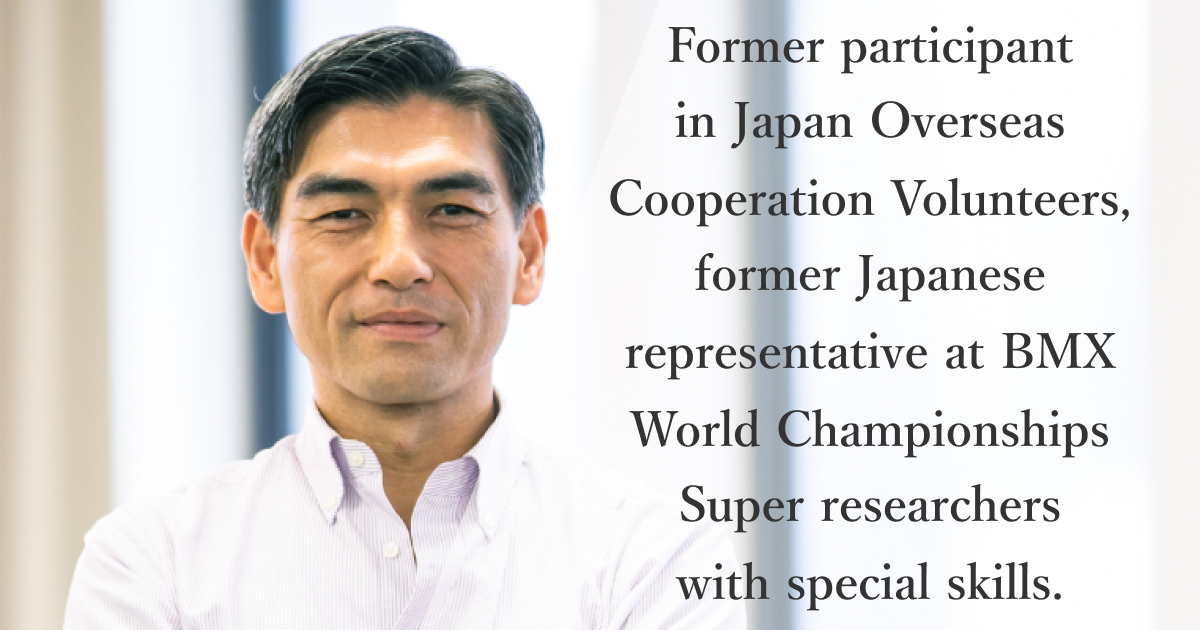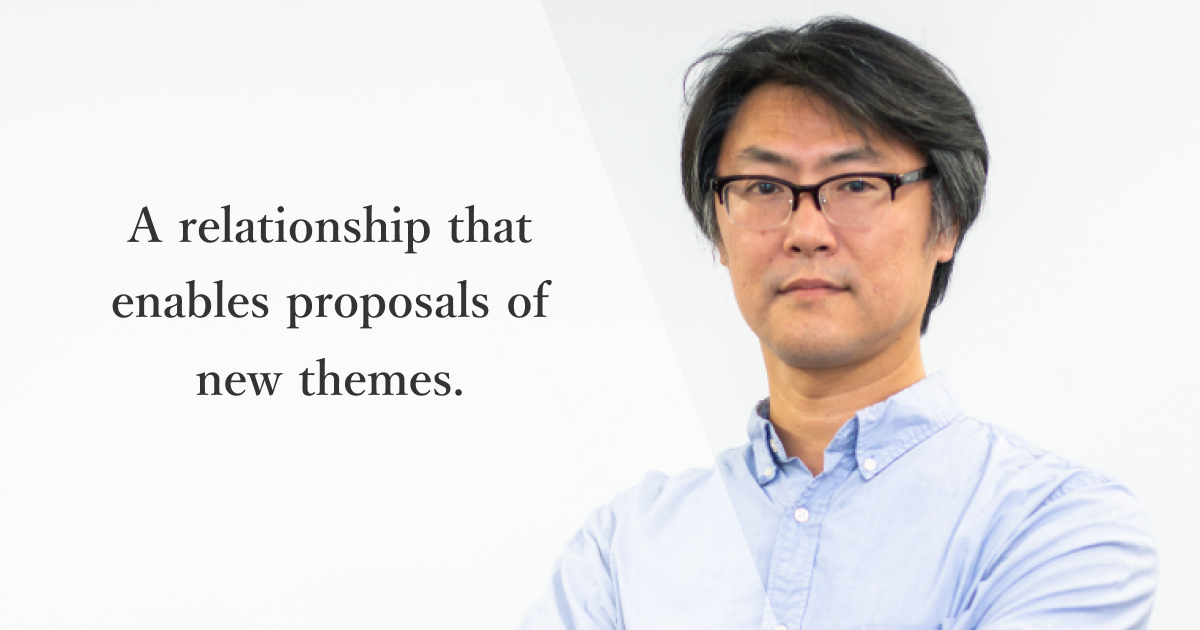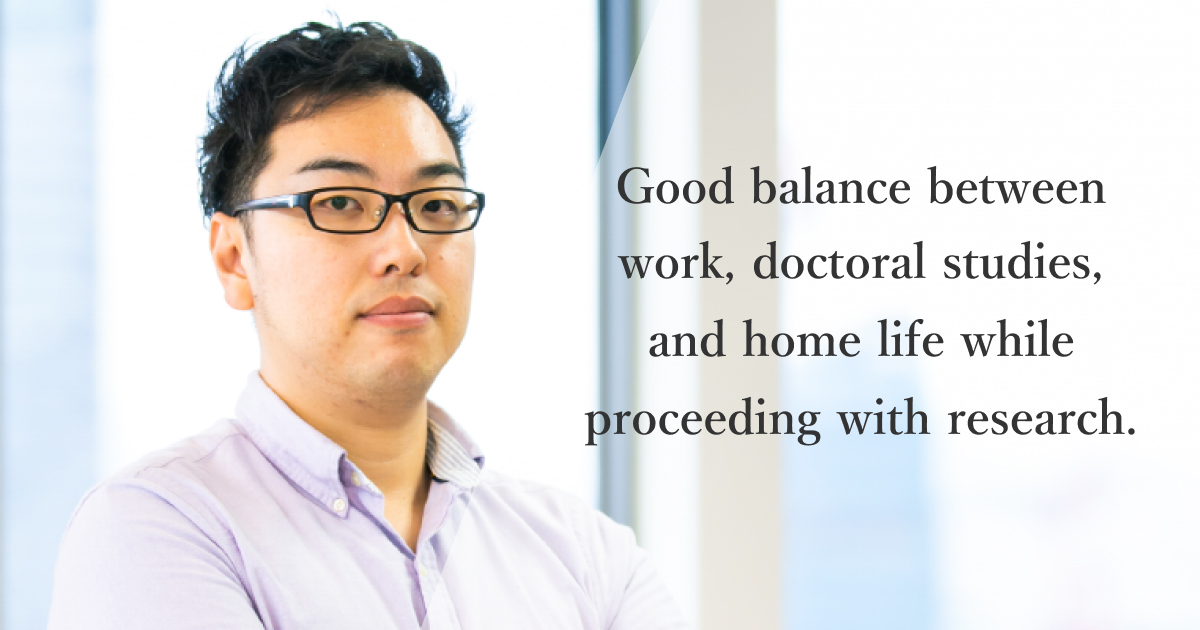Research and Development Group Researcher
Image
Recognition
Kohta Ishikawa
Kohta Ishikawa
PROFILE
Joined company in 2012.
Involved with software development,
numerical optimization, statistical analysis, and other technological
development
Fomenting a revolution in machine learning with a mathematical basis. The strength of researchers with a physics background
Since joining the company, Mr. Ishikawa has performed research into image processing and signal processing for machine learning. In his time off, he has continually expanded his interest in sports by tackling hobbies such as bouldering and cycling. Given his devotion to knowledge and physical fitness, we asked Mr. Ishikawa about the attraction of working at DENSO IT Laboratory (hereafter, IT Lab).
Attracted to IT Lab due to similarities with university laboratories
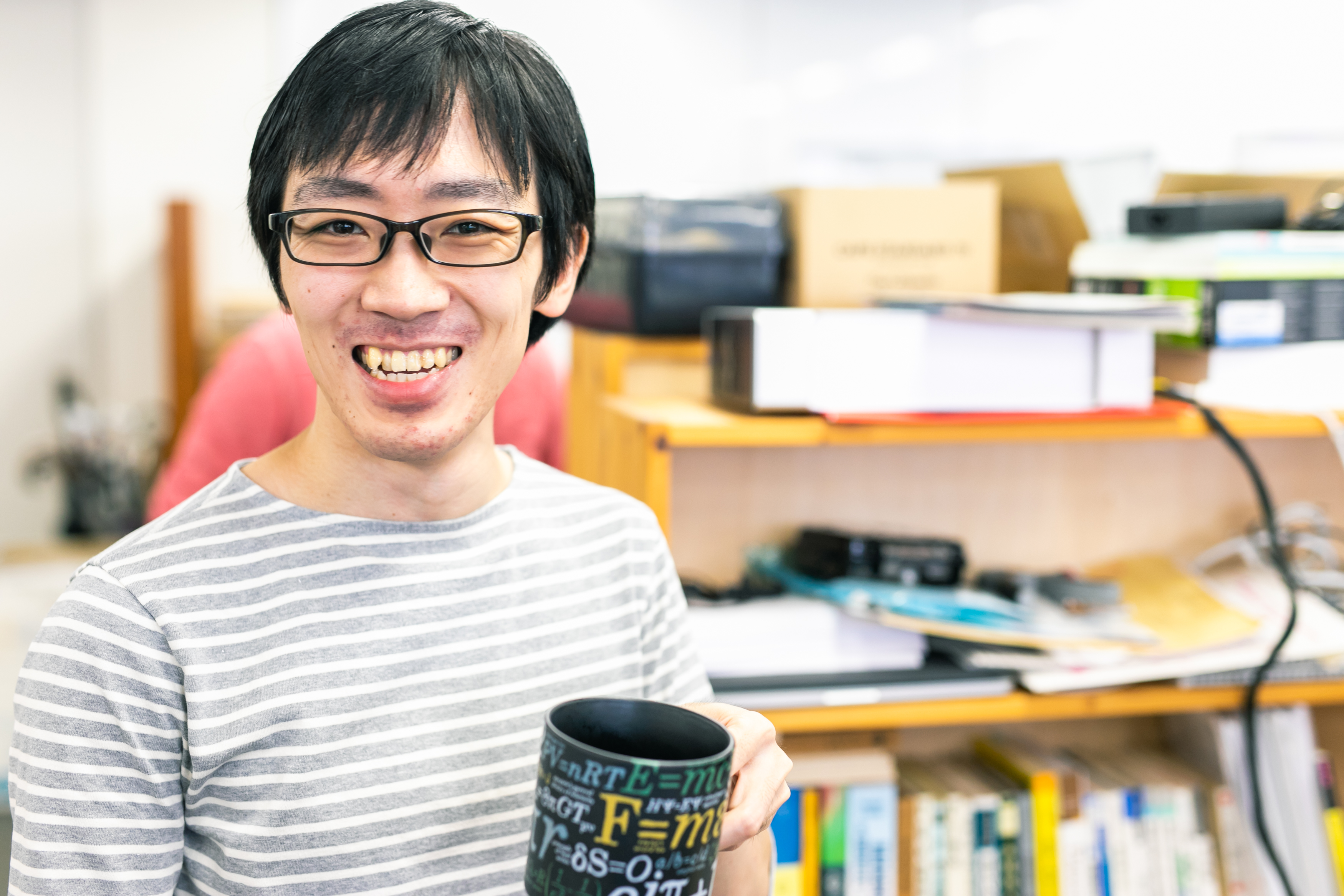
My research themes at the university level were focused on the physical
properties of carbon nanotubes.
Carbon nanotube is a material which can be rolled into sheets where carbon
atoms are arranged in hexagonal shapes. At present, that special
characteristic is being considered for use in a number of practical
applications, but at the time, we were conducting theoretical exploration
of its physical properties, including its reaction to electrical
conduction and magnetic fields, as well as the effects of electron lattice
interaction.
After completing graduate school, I worked as a securities analyst at a financial company. Given the need for a broad analysis of market and stock data, I felt that a physicist’s perspective of modeling phenomena and exploring causes and meaning could be utilized. I was employed there for two years, but eventually I wanted to do work that took advantage of scientific cultures and so, I switched workplaces.
The next company I selected was one where I could develop the software and solutions necessary for scientific calculations. As I worked daily to develop engineering products for problem optimization and simulation, the theoretical knowledge of these properties I gained in my university days proved useful and I was able to further study in fields that captured my interest, which was quite fulfilling.
As I did that, my desire grew to do not just contract development, but also be involved with research work as well. Then, once I hit the age of 30, I decided to change jobs for the second time. I began looking for research work. I interviewed with several companies, but IT Lab’s policy of allowing researchers to freely select their own research themes reminded me of university laboratories, and that proved the deciding factor.
Finding challenges in the currents of new research
After joining the company, I did research into computer vision technology, such as recognizing objects via images and LIDAR, as well as the hashing method, an algebraic technique that reduces calculation volume. After searching for avenues where I could provide value that utilizes my strengths, I’ve arrived at research into signal processing and other tasks that operate on the basis of machine learning.
In addition, from 2012, I observed the widespread improvements in modeling performance as a result of deep neural networks centered around computer vision, and shifted my research in that direction. With regard to spatial signals like images, I know that the structure called CNN (Convolutional Neural Network) is effective. That involves interpreting local image features like edges as shapes with irregular parallel shifts, and capturing those complex combinations in double layers. By doing so, it’s said that we can explore the structure of the system of human vision bit by bit.
CNN is an extremely powerful framework, but it is not always appropriate for the handling of space-time signals like video. Despite the fact that space and time are dimensions of fundamentally different meaning, I worry that simple CNN will treat them as identical. Models like Recurrent Neural Networks (RNN) do exist for handling the axis of time, but lately, we have arrived at the question of whether time can be handled with a convolutional structure.
Expressing the value of knowing about outside fields and trades
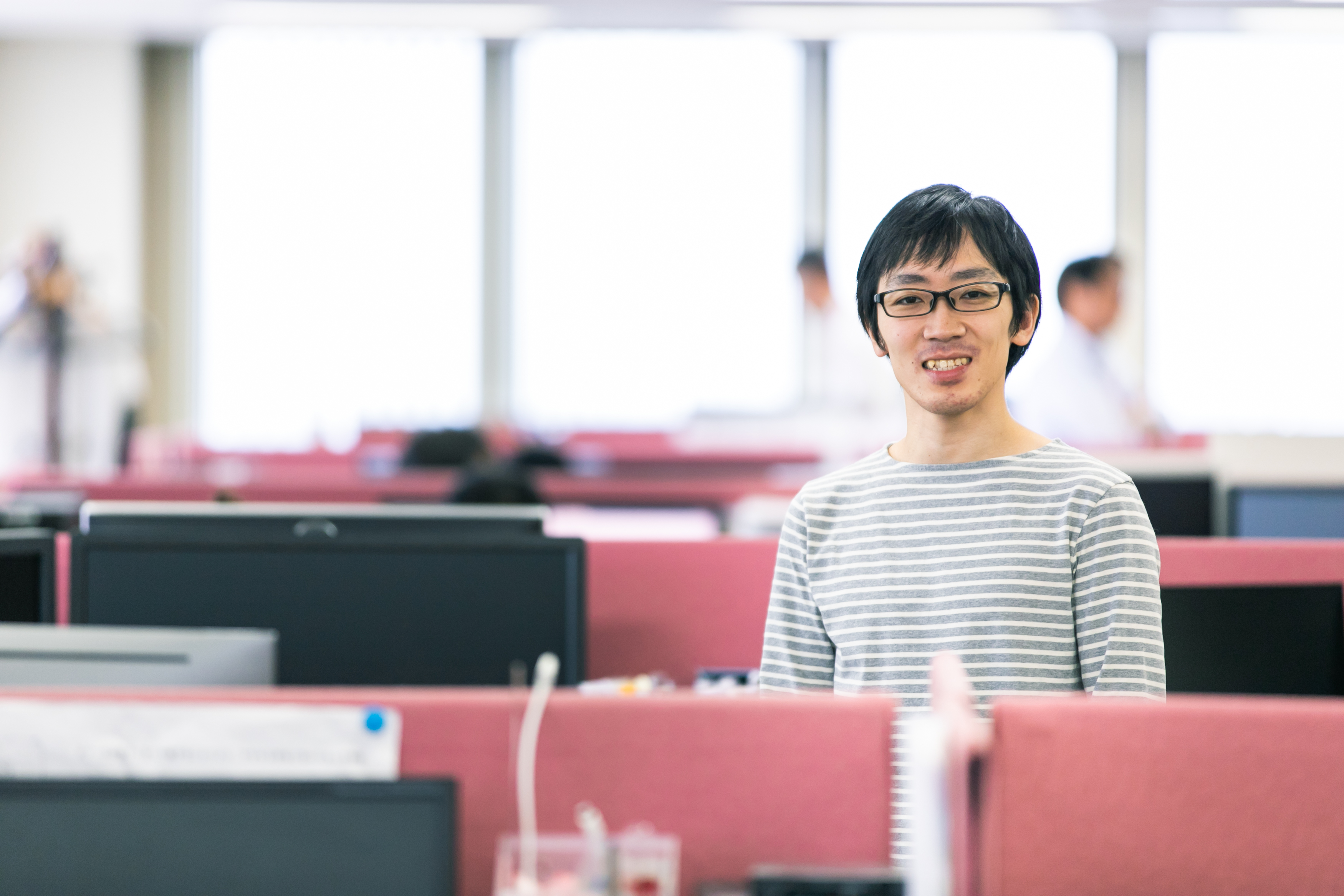
These days, I’m able to discuss my research content with passion, as I’m doing right now, but when I first joined the company, I started out not knowing right from left. Even considering that I had studied image recognition at my previous employer, my background is in physics, not engineering. Research into engineering means pruning or growing new branches from a tree that mankind has cultivated, and requires a fundamentally different approach from something like physics, which is the study of nature as it exists, regardless of mankind. Rather than the fundamental existence of basic laws, I think the core of engineering is the accumulation of those things that people have addressed as problems, and how they have solved them.
Especially given the focus on deep neural networks, countless new branches have sprouted from that tree at great speed, and without being able to rely on fundamental laws, I feel that it is necessary to have the ability to see which of those branches will remain in the end, or which can be applied to actual problems. When executing that philosophy, I believe that someone like me, who has a physics background and values an emphasis on fundamental laws, can use that perspective as a way of developing that foresight. However, within myself, I still struggle to find balance between engineering and physics.
Chatting with coworkers can be a form of discussion
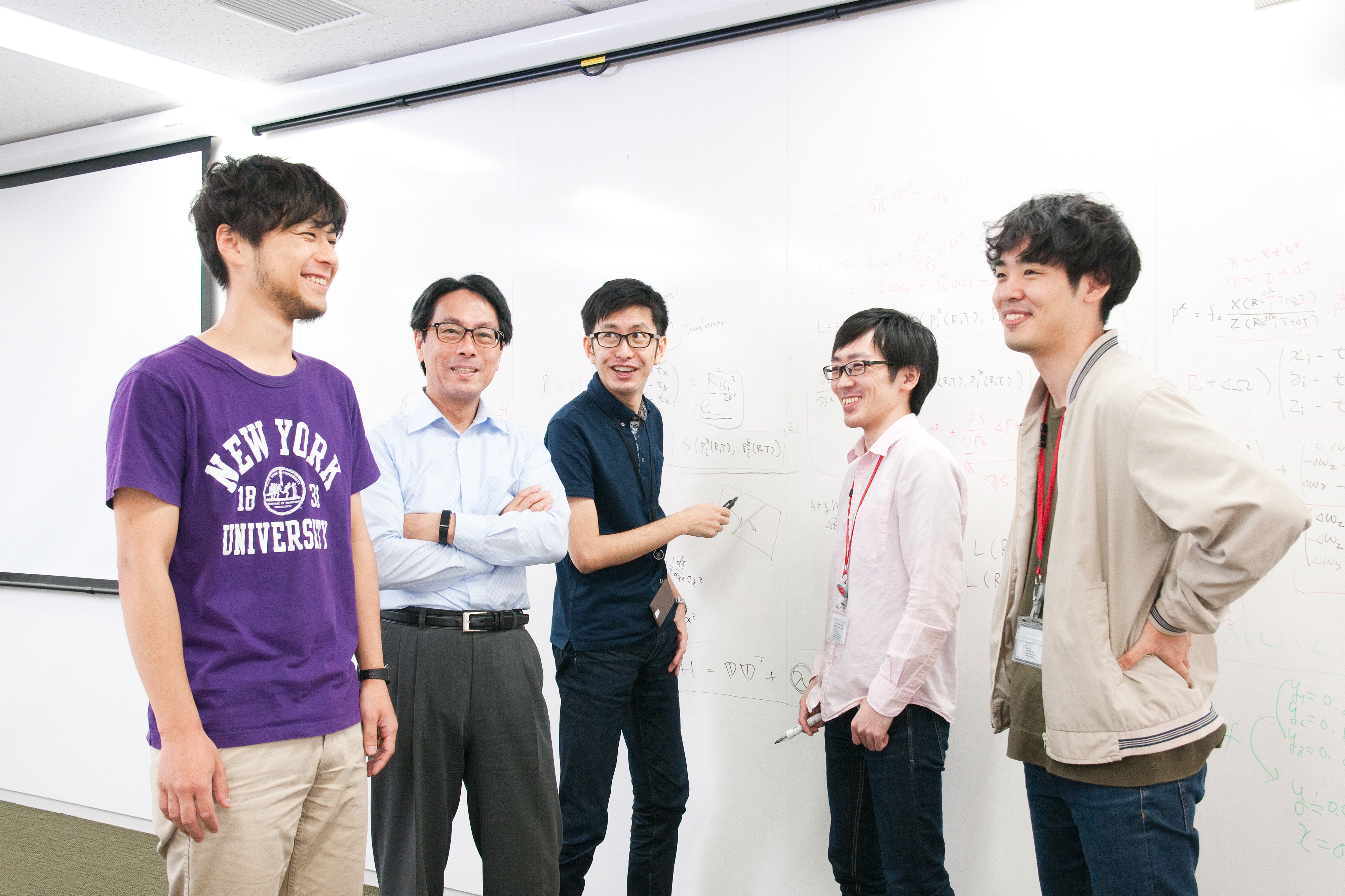
Still, the environment at IT Lab is definitely helpful. All of my coworkers have strong intellectual curiosity and work hard to support each other. We are able to engage in free discussion, regardless of boundaries between teams, and have study meetings at a rate of once a week. The content does not depend on what research each person is assigned within the company. Instead, everyone is able to bring up research papers and topics that hold their interest, and that sometimes leads to discussions of core mathematical principles like measure theory, probability theory, or function analysis.
There are whiteboards all over the office that can be utilized at any time. Just staying at my desk can be too confining, and having space encourages contemplation. Knowing that I have an entire wall to do calculations, ideas begin to well up. Sometimes we start conversations in passing and what begins as a chat often develops into a full scale discussion. We even have parties where we discuss our research with a drink in hand.
Finding groundwork through studying abroad program
IT Lab has a program that encourages study abroad at overseas research institutions. Time abroad can last up to two years and someone is always being dispatched. I was lucky enough to be selected for the program in my fourth year as an employee. I was able to freely choose which places to apply to and after searching, I saw that the lab of Bruno Olshausen at UC Berkeley was dealing with similar research fields and chose there.
While studying abroad, I threw myself into my research more than ever and searched for my own stance as a researcher. American university culture places a great emphasis on meaningful academic activity and social contribution, so I learned from that and began to recognize that meaningful contribution was also possible through corporate research with an emphasis on practical application. That philosophy continues to be useful in my current research activities.
Clearing the mind through bouldering
You’ll hear this from a lot of researchers, but the foundation of research is actually the body. It might be a bit of an exaggeration to say a healthy soul resides in a healthy body, but physical health is important. Since Geomatec also has a discretionary work system, my hours are not set in stone and when I’m busy, I start work early so that I can end my day by 9 or 10 pm. In our work, results mean everything.
So when things get hectic, I go bouldering. It’s a hobby I discovered after being invited by a friend, but now I go two times a week. No matter how full my head gets with numerical formulas or coding, once I start to climb a wall, I can concentrate on the surface shapes before me and clear my head. If I move my body and clear my head, I guarantee that I will have a good night’s sleep. Then I start the morning in a good mood and confront my research with renewed energy. It also builds more stamina as I go along and now, I can’t do without it.
Utilizing the mindset of a physicist
The recent developments in neural networking or related fields have shown everyone the limits of traditional physics, such as element reduction methods. With engineering, all that is required for applied usage is high performance and those things that can’t be processed using machine learning can be covered during operation, so its value is secure. However, I believe that with a situation like what exists now, where a number of new models are being tested, the chaotic nature of the circumstances requires design criteria that are backed up by mathematics. I don’t know whether the methodology of physics will prove useful on its own, but by understanding neural networks and the problems they solve as phenomena, I hope that it will be of assistance.

